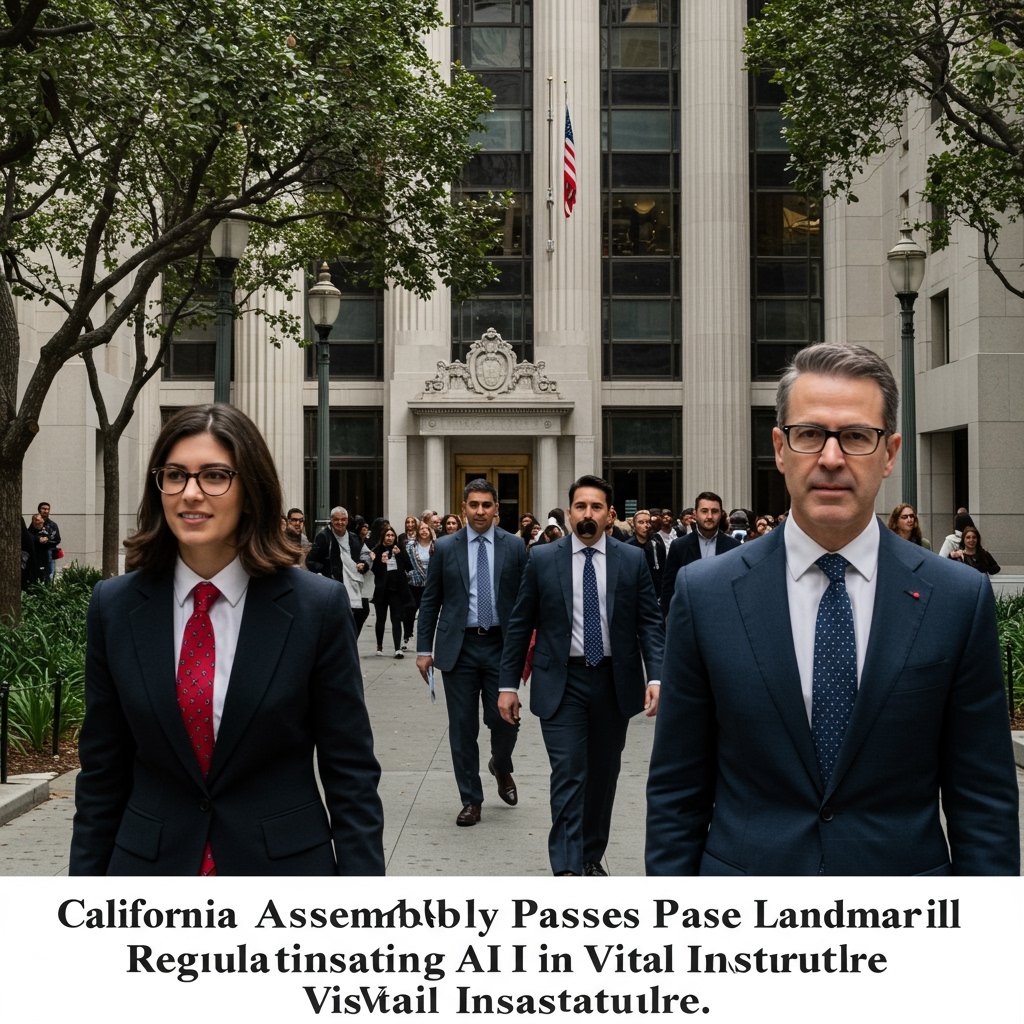California Advances Critical AI Regulation Bill Through Assembly
Sacramento, CA – In a significant move poised to establish new precedents for the governance of artificial intelligence, the California State Assembly has successfully passed Assembly Bill 10 (AB 10). This landmark piece of legislation is specifically designed to impose stringent regulations on the development and deployment of artificial intelligence systems within the state’s most critical infrastructure sectors. Among the vital areas targeted are the intricate energy grids powering millions of homes and businesses, and the essential water management systems ensuring supply and safety across California.
The bill, championed by Assemblymember Reyes Soto (D-Los Angeles), represents a proactive effort by state lawmakers to address the potential risks associated with integrating increasingly sophisticated AI technologies into systems fundamental to public safety and economic stability. AB 10 mandates rigorous pre-deployment risk assessments for AI applications intended for use in designated critical infrastructure, requiring developers and operators to proactively identify and mitigate potential hazards before systems go live. Furthermore, the bill establishes a dedicated state-level oversight body. This new entity will be tasked with reviewing AI applications deemed high-risk based on criteria outlined in the legislation, providing an additional layer of scrutiny for systems where failure or bias could have catastrophic consequences.
The impetus for AB 10’s introduction and subsequent rapid movement through the Assembly was significantly influenced by recent findings detailed in a state-commissioned report. This comprehensive study meticulously cataloged vulnerabilities, potential biases, and operational risks inherent in existing or planned AI systems within critical infrastructure across California. The report highlighted concerns ranging from security weaknesses that could be exploited by malicious actors to embedded biases that might lead to inequitable service delivery or system failures affecting specific communities disproportionately. Lawmakers supporting AB 10 have frequently cited this report as compelling evidence of the urgent need for a structured regulatory framework to safeguard the public interest.
Assemblymember Reyes Soto, speaking on the Assembly floor prior to the vote, emphasized the necessity of getting ahead of potential issues. “As AI becomes more integral to managing our power, water, and transportation, the potential for harm from system failures, cyberattacks, or algorithmic bias grows exponentially,” Soto stated. “AB 10 is not about stifling innovation; it’s about ensuring that the AI systems we rely on for essential services are safe, reliable, and equitable. This bill provides the necessary guardrails to build public trust and protect our critical infrastructure from unforeseen risks identified in the state’s own findings.”
The passage of AB 10 through the State Assembly marks a crucial milestone in its legislative journey. The bill garnered sufficient support from a bipartisan coalition of lawmakers who acknowledged the dual potential of AI – its capacity for efficiency and optimization alongside its inherent risks when applied without adequate oversight in sensitive areas. The legislative debate in the Assembly saw discussions ranging from the specific definition of “high-risk” AI to the practical implementation challenges for utility companies and system operators.
With the Assembly’s approval secured, AB 10 now advances to the California State Senate for further consideration. Here, it is expected to undergo committee hearings and potentially face amendments before being brought to a full Senate vote. The legislative process in the Senate will likely involve intense scrutiny from various stakeholders, including consumer advocacy groups, civil liberties organizations, infrastructure operators, and, notably, representatives from the technology industry.
Opposition to AB 10 has primarily emanated from some segments of the tech industry and their associated lobbying groups. Concerns center around the potential implementation costs associated with complying with the bill’s requirements, particularly the mandated rigorous pre-deployment risk assessments and ongoing engagement with the proposed state oversight body. Critics argue that the regulatory burden could slow down the adoption of beneficial AI technologies, increase operational expenses for companies managing critical infrastructure, and potentially stifle innovation by creating overly complex compliance hurdles. They suggest that existing safety regulations and industry standards might be sufficient, or that a less prescriptive approach would be more effective.
Supporters, however, counter these arguments by emphasizing that the costs of proactive risk management and oversight are significantly lower than the potential costs – in terms of economic disruption, environmental damage, or even loss of life – that could result from a catastrophic failure or malicious exploitation of unregulated AI in critical systems. They highlight that the bill is narrowly focused on critical infrastructure, not the broad spectrum of AI applications, making the compliance requirements proportionate to the potential risks involved.
The proposed state-level oversight body is envisioned as a crucial component of the regulatory framework. While the exact composition and detailed powers are subject to final legislative text, it is expected to comprise technical experts, potentially regulators from relevant state agencies (like those overseeing energy or water), and perhaps public representatives. This body would likely be responsible for developing specific guidelines for the risk assessments, reviewing assessment findings for high-risk systems, and potentially having the authority to require modifications or even prohibit deployment if risks are deemed unacceptable.
The passage of AB 10 aligns California with a growing global trend among governments seeking to understand and regulate artificial intelligence, particularly in areas impacting public safety and fundamental rights. The European Union’s Artificial Intelligence Act, for instance, also employs a risk-based approach, placing strict requirements on high-risk AI systems, including those used in critical infrastructure. California, often a trendsetter in technology policy within the United States, is positioning itself at the forefront of developing state-level AI governance models.
As AB 10 moves to the Senate, the debate over balancing innovation with safety and security will undoubtedly continue. The outcome in the Senate will determine whether California enacts this ambitious regulatory framework, potentially influencing how other states and the federal government approach the complex challenge of governing AI in critical sectors for years to come. The focus now shifts to the Senate chambers, where the fate of this landmark bill regulating artificial intelligence in California’s vital infrastructure will be decided.


















